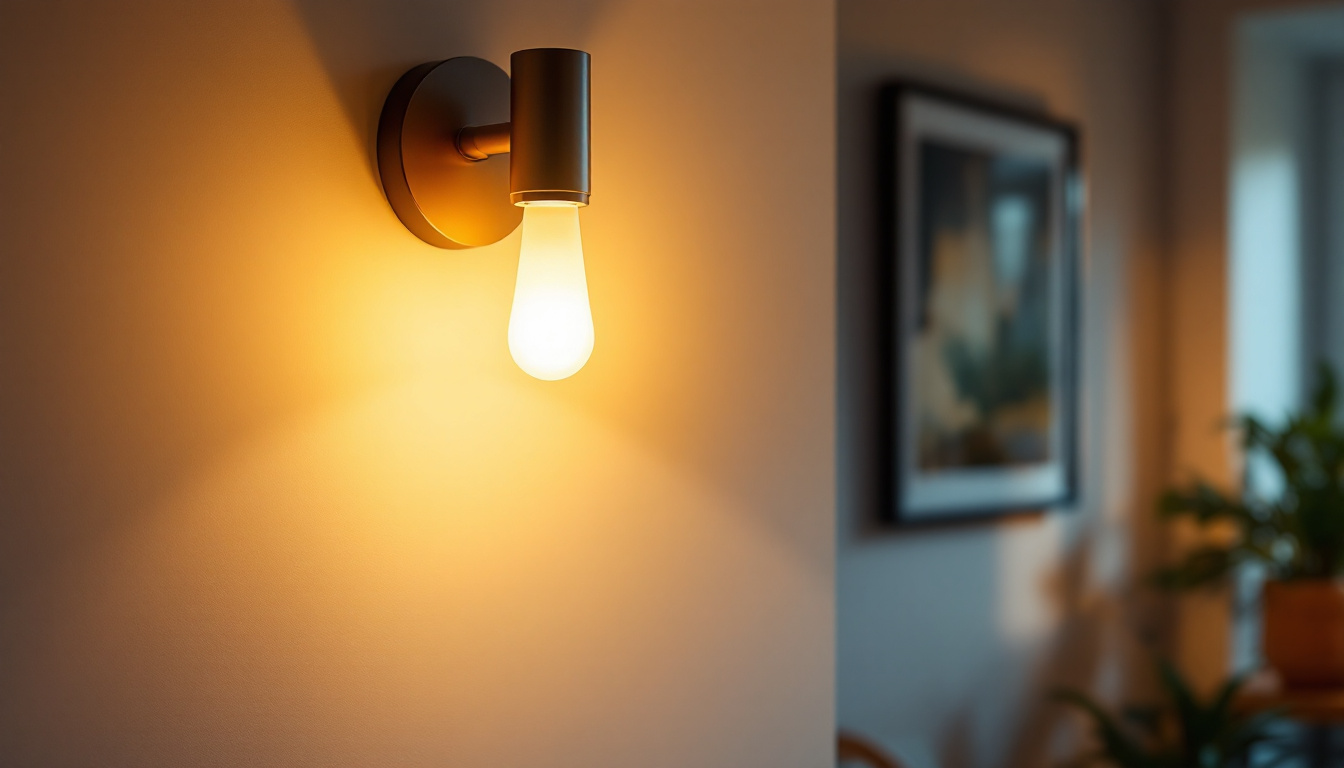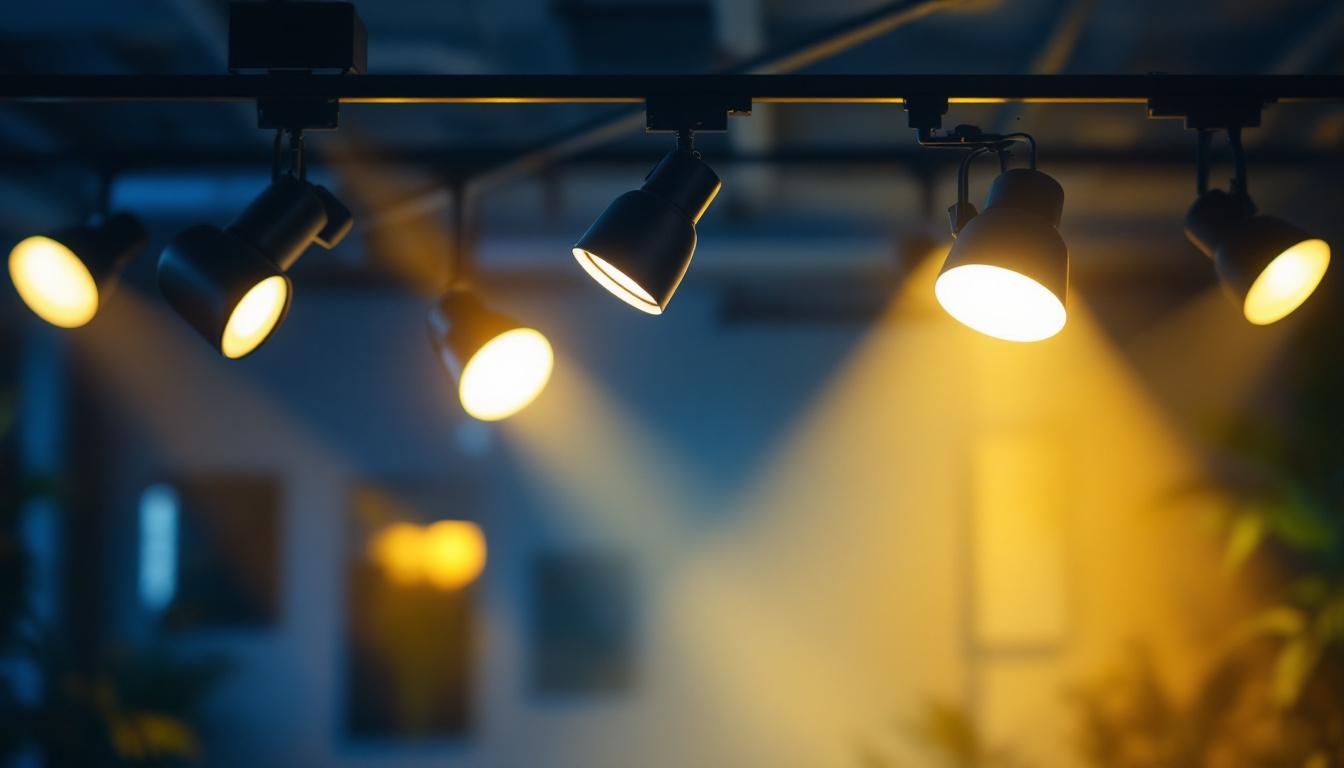
Wall lighting is a crucial element in both residential and commercial spaces. It serves not only as a source of illumination but also as a design feature that can enhance the aesthetics of a room. For lighting contractors, mastering the art of wall lighting can lead to improved client satisfaction and increased project value.
Bright wall lamp lights are particularly essential in areas where ambient light is needed without overwhelming the space. They can create a warm and inviting atmosphere, making them a popular choice for living rooms, hallways, and even outdoor settings. Understanding the various types of wall lamps available and their appropriate applications is vital for any lighting contractor aiming to excel in their field. Moreover, wall lighting can also play a significant role in setting the mood of a space, influencing how people feel and interact within that environment. For example, strategically placed wall sconces can create a cozy nook for reading or relaxation, while brighter wall-mounted fixtures can energize a workspace, enhancing productivity.
There are several types of wall lamps, each designed for specific functions and aesthetics. Sconces, for instance, are versatile fixtures that can serve as both decorative and functional lighting. They can be used to highlight artwork or architectural features, providing both ambient and task lighting. The design of sconces can vary widely, from traditional candle-style sconces to sleek, modern designs that incorporate minimalist elements, allowing them to fit seamlessly into various decor styles.
Another popular option is the wall-mounted LED light, which offers energy efficiency and longevity. These lights can be installed in various settings, from modern homes to commercial spaces, and come in a wide range of styles and finishes to suit different design preferences. Additionally, LED wall lights often feature adjustable brightness settings and color temperatures, enabling users to customize the ambiance according to their specific needs. This adaptability makes them an excellent choice for multipurpose spaces where lighting requirements may change throughout the day.
When selecting wall lamps, brightness is a key consideration. The lumens output of a light fixture determines how bright it will be in a given space. For instance, a cozy living room may require softer lighting, while a workspace may need brighter illumination for tasks. It’s also important to consider the color rendering index (CRI) of the bulbs used, as this affects how colors appear under the light, which can be particularly important in settings like art studios or retail spaces where color accuracy is paramount.
Lighting contractors should be familiar with the appropriate lumen levels for different applications. This knowledge allows them to recommend the best options to clients, ensuring that the lighting meets both functional and aesthetic needs. Furthermore, understanding the interplay between natural light and wall lighting can greatly enhance a space’s overall feel. For example, in a room with large windows, wall lighting can complement the natural light during the day while providing necessary illumination in the evening, creating a balanced and inviting atmosphere throughout the day and night.
Design is an integral part of any lighting project. Wall lamps should not only provide adequate illumination but also complement the overall decor of the space. Lighting contractors must be adept at understanding their clients’ design preferences and how different fixtures can enhance a room’s ambiance.
Incorporating wall lamps into a design scheme involves considering factors such as color, material, and style. For example, a sleek, modern sconce may be ideal for a contemporary home, while a vintage-inspired fixture could suit a more traditional setting. The interplay of light and shadow created by wall lamps can also significantly affect the mood of a space.
The materials used in wall lamp construction can greatly influence both durability and aesthetics. Common materials include metal, glass, and ceramic, each offering unique benefits. Metal fixtures, for instance, tend to be more durable and can provide a sleek, modern look, while glass can add an element of elegance and softness.
Lighting contractors should consider the environment in which the wall lamps will be installed. Outdoor fixtures, for example, need to be made from weather-resistant materials to withstand the elements, whereas indoor fixtures can be more varied in material choice.
Color temperature is another critical aspect of wall lighting. Measured in Kelvin (K), it affects the ambiance of a space. Warm white light (around 2700K) creates a cozy atmosphere, making it perfect for living areas and bedrooms. In contrast, cooler white light (above 4000K) is more suited for workspaces, promoting alertness and focus.
Lighting contractors should educate their clients about the impact of color temperature on mood and how to select the right options for different areas of a home or business. This knowledge can help create spaces that are not only functional but also emotionally inviting.
Proper installation of wall lamps is crucial for both safety and performance. Lighting contractors must adhere to local electrical codes and best practices to ensure that fixtures are installed correctly. This includes selecting the appropriate mounting height and ensuring that wiring is safely concealed.
In addition to technical considerations, the aesthetic placement of wall lamps is also important. Contractors should consider the flow of the room and how the light will interact with other elements in the space. Strategic placement can enhance the overall design and functionality of the lighting scheme.
When installing wall lamps, height and placement are key factors. A general guideline is to mount sconces at eye level, typically between 60 to 66 inches from the floor. This height allows for optimal illumination without causing glare or discomfort.
In spaces with multiple fixtures, maintaining consistent spacing is also important. A well-thought-out arrangement can create a harmonious look, while uneven placement may lead to an unbalanced appearance. Lighting contractors should take the time to plan the layout carefully to achieve the best results.
Electrical safety is paramount when installing wall lamps. Contractors must ensure that all wiring is done according to code and that fixtures are securely mounted. Using the right gauge wire and ensuring proper grounding can prevent potential hazards.
Additionally, it’s essential to educate clients about the importance of regular maintenance and inspection of their lighting fixtures. This can help prevent issues such as flickering lights or electrical failures, ensuring that the wall lamps continue to function safely and effectively.
The lighting industry is continually evolving, with new trends emerging regularly. Staying updated on the latest innovations can give lighting contractors a competitive edge. One notable trend is the rise of smart lighting solutions, which allow for customizable lighting experiences through mobile apps or voice control.
Another trend is the increasing popularity of sustainable lighting options. Energy-efficient LEDs and fixtures made from recycled materials are becoming more common, appealing to environmentally conscious consumers. Lighting contractors should be prepared to offer these options and educate clients about their benefits.
Smart wall lamps can be programmed to adjust brightness and color temperature based on the time of day or specific activities. For example, a wall lamp can be set to emit a warm glow in the evening to create a relaxing atmosphere, while providing bright, cool light during the day for productivity.
Integrating smart lighting into a home can also enhance security. Many smart wall lamps can be programmed to turn on and off at specific times, giving the appearance that someone is home, which can deter potential intruders.
As sustainability becomes a priority for many consumers, lighting contractors should be well-versed in eco-friendly options. Energy-efficient LED wall lamps not only reduce electricity consumption but also have a longer lifespan compared to traditional incandescent bulbs.
Additionally, using fixtures made from recycled materials can appeal to clients looking to minimize their environmental impact. By offering sustainable solutions, contractors can attract a growing segment of environmentally conscious customers.
To master the art of wall lighting, lighting contractors should utilize various resources available to them. Industry publications, online forums, and trade shows can provide valuable insights into the latest trends, technologies, and best practices.
Networking with other professionals in the field can also be beneficial. Collaborating with interior designers, architects, and electricians can lead to new opportunities and a deeper understanding of how lighting fits into broader design projects.
Online courses and webinars can be a great way for lighting contractors to expand their knowledge and skills. Many organizations offer training programs focused on the latest lighting technologies, installation techniques, and design principles.
These platforms often provide flexible learning options, allowing contractors to study at their own pace while gaining valuable certifications that can enhance their credibility in the industry.
Attending trade shows and industry events can provide lighting contractors with firsthand exposure to new products and technologies. These events often feature demonstrations, workshops, and networking opportunities that can help contractors stay ahead of industry trends.
Moreover, meeting with manufacturers and suppliers can lead to beneficial partnerships and access to exclusive products that can give contractors a competitive edge in their projects.
Mastering wall lighting is an essential skill for lighting contractors looking to enhance their services and meet client expectations. By understanding the various types of wall lamps, design considerations, installation best practices, and emerging trends, contractors can create stunning and functional lighting solutions.
Utilizing available resources, such as online learning platforms and industry events, can further enhance their expertise and keep them informed about the latest developments in the field. Ultimately, a commitment to mastering wall lighting will lead to greater client satisfaction and a successful lighting contracting business.
Ready to elevate your lighting projects with premium, spec-grade wall lamps at unbeatable wholesale prices? Look no further than LumenWholesale. Our extensive selection of high-quality lighting products meets the highest industry standards, ensuring you deliver reliable and high-performance lighting solutions to your clients. Say goodbye to inflated markups and hello to hassle-free bulk buying with free shipping. Don’t compromise on quality or value—discover the best wholesale lighting deals at LumenWholesale and bring your lighting designs to life with ease and affordability.

Explore the advantages and drawbacks of using LED light panels in the lighting industry.

Discover the top challenges lighting contractors face when installing wall switches for ceiling fans and lights.

Discover the various types of track lighting heads and learn how choosing the right ones can give lighting contractors a competitive edge in winning more bids.

Discover how 8-foot LED fixtures can revolutionize your lighting projects and boost your business.